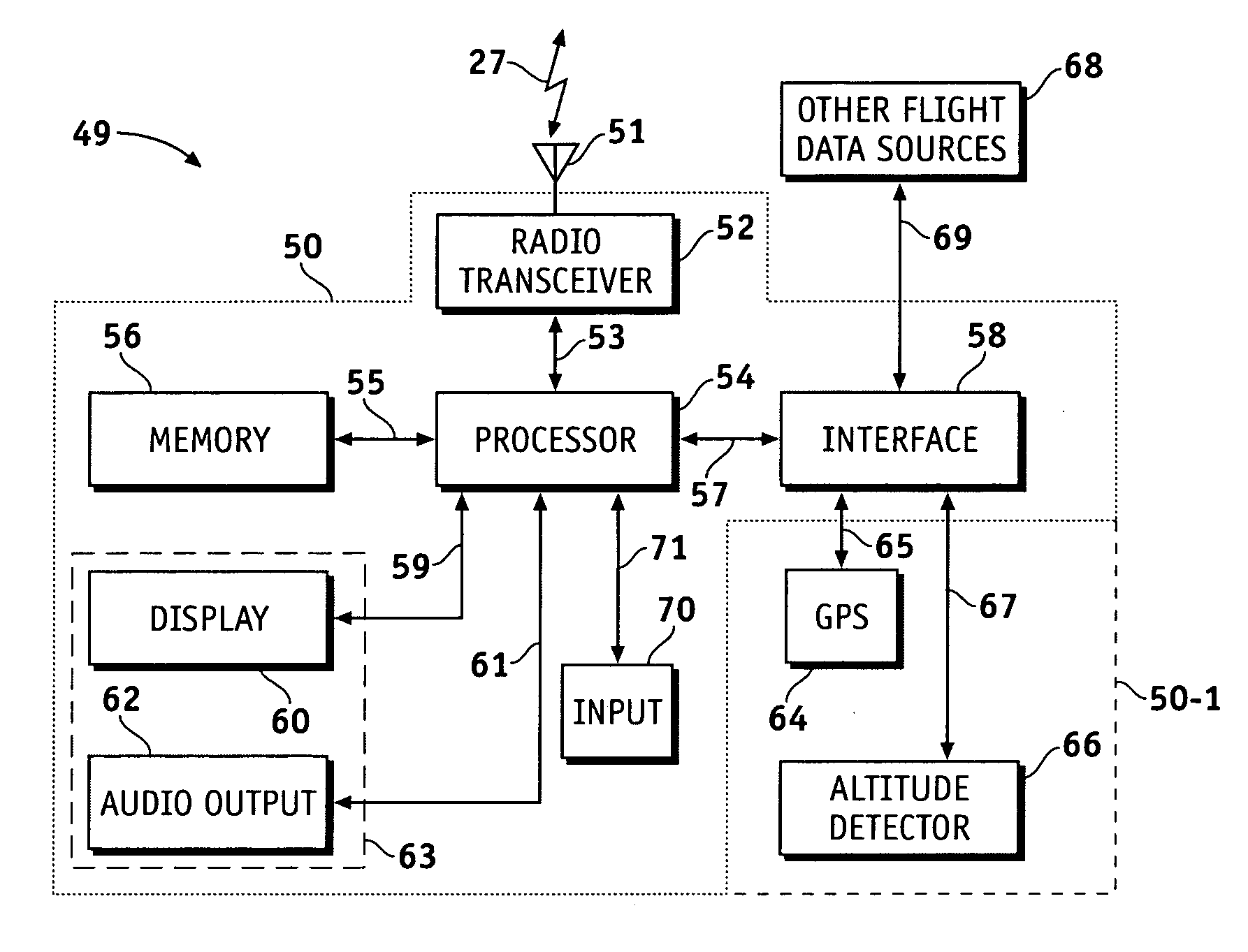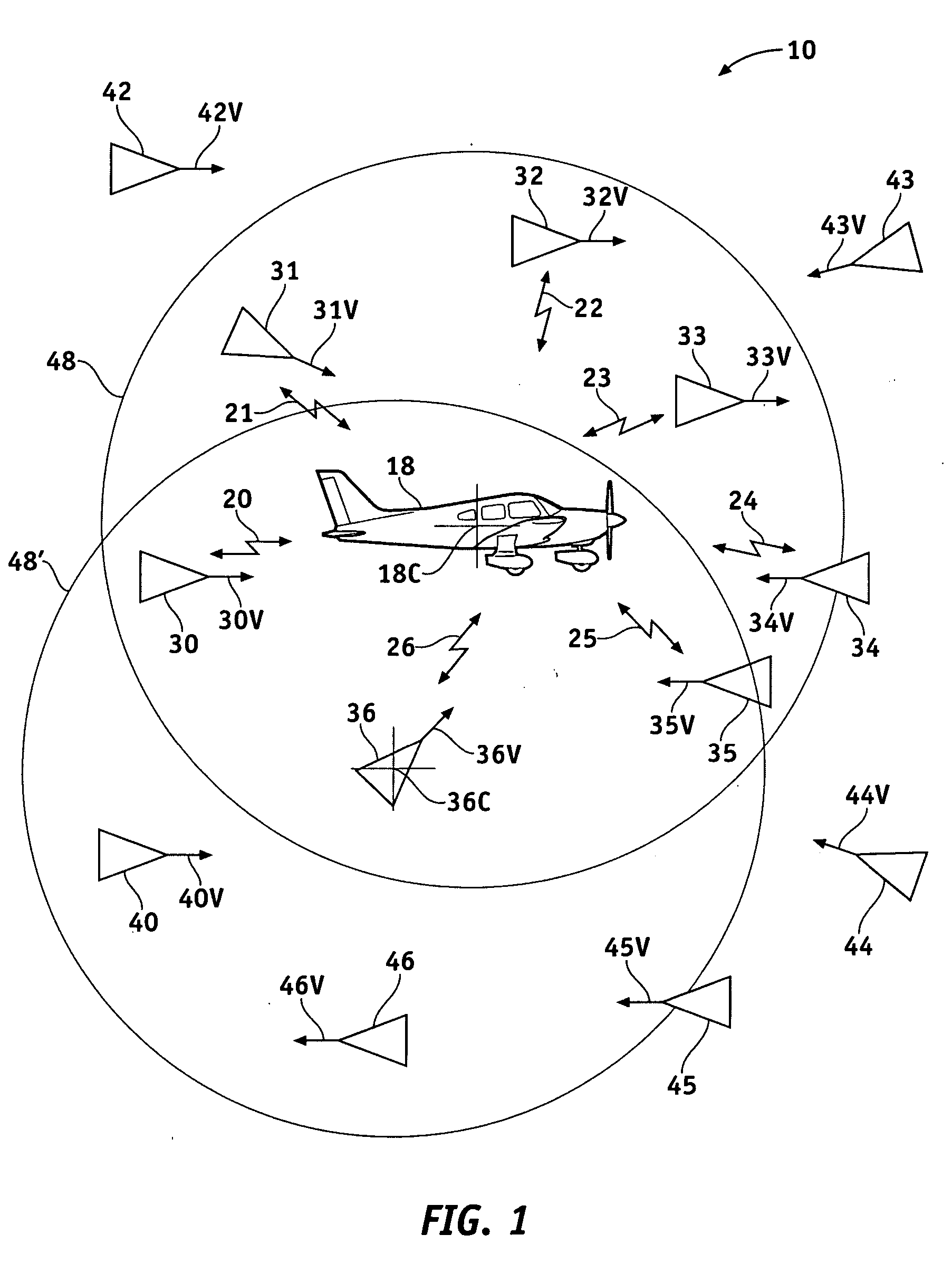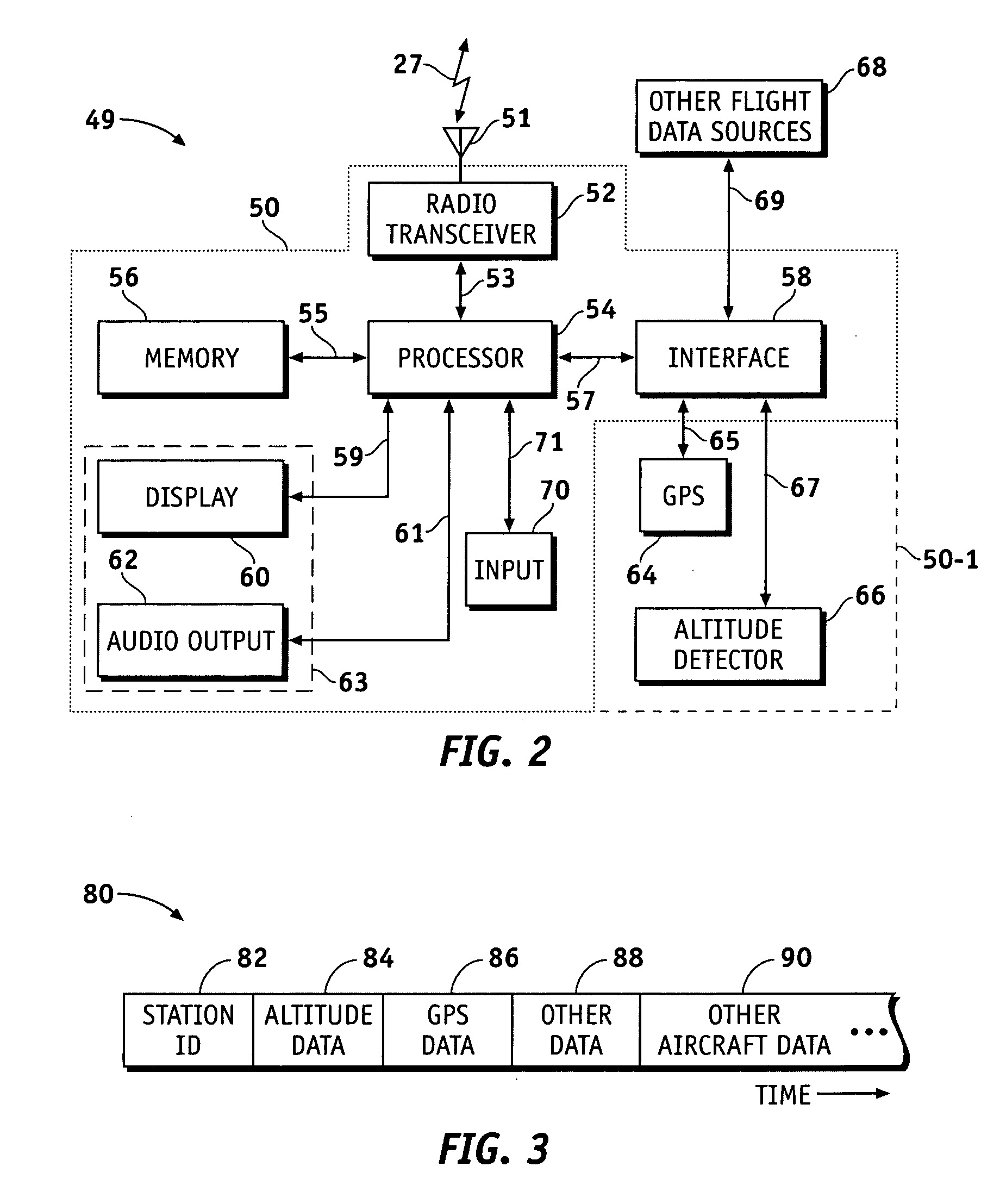Aircraft traffic warning system using an ad-hoc radio network
a traffic warning and aircraft technology, applied in the field of traffic monitoring, can solve the problems of unsuitable or economically unattractive use in relatively small private or commercial aircraft, light helicopters, light aircraft, etc., and achieve the effect of aircraft in the air, and reducing the number of aircra
- Summary
- Abstract
- Description
- Claims
- Application Information
AI Technical Summary
Benefits of technology
Problems solved by technology
Method used
Image
Examples
Embodiment Construction
[0014] The following detailed description is merely exemplary in nature and is not intended to limit the invention or the application and uses of the invention. Furthermore, there is no intention to be bound by any expressed or implied theory presented in the preceding technical field, background, brief summary or the following detailed description.
[0015]FIG. 1 is a simplified view of group 10 of light aircraft 18, 30-36 and 40-46 in flight at a particular moment in time, wherein a portion (e.g., aircraft 18 and aircraft 30-36) are intercommunicating according to the present invention, as indicated by signals 20-26. For convenience of explanation it is assumed that aircraft 18 is the aircraft in which the traffic warning system and method of the present invention is operating to alert the pilot thereof of any potential hazards that may be presented by the other aircraft. However, those of skill in the art will understand based on the description herein that similar systems may be o...
PUM
 Login to View More
Login to View More Abstract
Description
Claims
Application Information
 Login to View More
Login to View More - R&D
- Intellectual Property
- Life Sciences
- Materials
- Tech Scout
- Unparalleled Data Quality
- Higher Quality Content
- 60% Fewer Hallucinations
Browse by: Latest US Patents, China's latest patents, Technical Efficacy Thesaurus, Application Domain, Technology Topic, Popular Technical Reports.
© 2025 PatSnap. All rights reserved.Legal|Privacy policy|Modern Slavery Act Transparency Statement|Sitemap|About US| Contact US: help@patsnap.com



